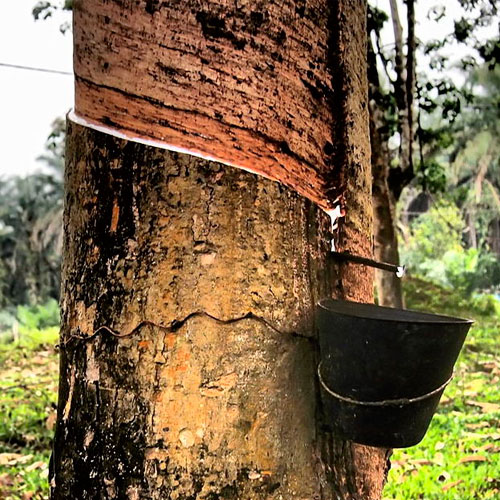General use synthetic rubbers

Synthetic rubbers are mainly used in applications where some key characteristic such as high abrasion or low permeability are needed.
Thanks to IR a material homologous to natural rubber was obtained by synthesis, and its formulation is quite like the NR one. In moulding operations, by compression as well as by injection, these synthetic polyisoprenes flow much easier than natural rubber, which can be particularly beneficial when moulding by injection or in the manufacture of difficult or thin and large surface parts. And, its lower tear resistance, especially at vulcanisation temperatures, can make these complex parts difficult for the mould to be released.
In the extrusion, calendaring and manufacturing of composite articles, synthetic polyisoprenes do not present any special difficulties, except those that could come from its lower toughness and resistance in the raw state, and, in the particular case of those obtained with butyl-lithium, coming from its cold flow. The lower tendency to crystallisation synthetic polyisoprenes have is translated into lower values of hardness, rigidity, resistance to traction and tearing, and by a lower retention rate of these mixtures without loads.
The higher purity of the synthetic polyisoprenes offers a better performance as an electrical insulator. As these are synthetic materials, they show uniformity that is not present in natural rubber.
Butadiene-Styrene Rubbers (SBR)
Butadiene-Styrene Rubbers are the most widely consumed type of synthetic rubber. Like natural rubber, SBR can be vulcanised by means of sulphur and accelerators, by means of peroxides or by means of other special vulcanising agents.
SBR is not as sensitive to rust as natural rubber because, a part of its intrinsic nature, it has an antioxidant. Also, SBR rubbers need the presence of reinforcement loads to reach a satisfactory level of mechanical strength. An abrasion strength is obtained with such loads which often exceeds natural rubbers.
SBR rubbers are clearly inferior to natural rubbers in relation to resilience. In terms of dynamic fatigue behaviour, SBR are better than natural rubber because cracks take more time to appear, but, once they start appearing, due to fatigue, or due to an unusual mechanical laceration, they spread quicker than in vulcanised natural rubbers.
The manufacture of tyre covers, cables insulation, moulded technical articles, footwear, belts, hoses, or adhesives stand out among others.
Polybutadiene polymers are among the first synthetic rubbers manufactured on an industrial scale. When used as the only rubber during a vulcanising process, the BR of a high content of cis-1,4 give tensile and tear strength, and higher values of elongation. Their abrasion strength is also better, which is higher in all BRs than in SBR and natural rubbers.
The high resilience of the vulcanised products of BR is one of its special features, which is much higher than natural rubber at room temperature. Its resistance to cold is also outstanding. BR of high cis content maintain their high resilience to temperatures as low as -40º C.
If natural rubber is progressively replaced by BR in a formulation until the proportion of this last one does not exceed a value of approximately 40-45 per cent, it does not turn into a perceptible worsening of production features, but also some advantages are obtained instead:
- Better abrasion resistance
- Less tendency to fatigue cracking
- Higher reversion strength
In the same way, in the case of a SBR formulation, until approximately 50% of it is not replaced by BR, the production features do not affect in a sensitive way, resulting in:
- Better abrasion resistance
- Less tendency to fatigue cracking
- Higher resilience and less hysteresis, what means a lower heat generation, and lower running temperatures as a result.
Other Materials

Natural Rubber (NR)

